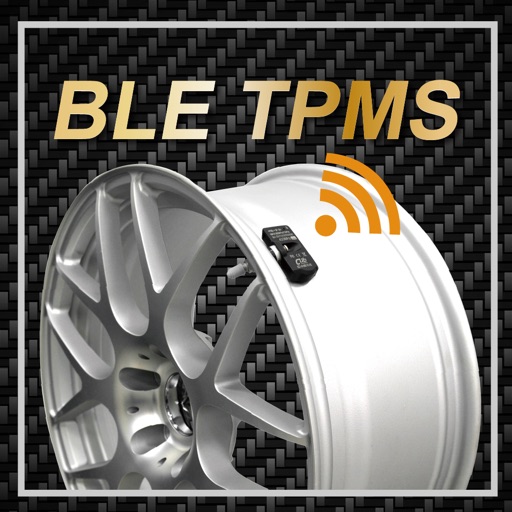

Vehicle safety has always been an important topic in the transportation field, and insufficient tire pressure or puncture is one of the common causes of many traffic accidents. In order to improve vehicle safety, tire pressure monitoring systems came into being. The emergence of Bluetooth Low Energy (BLE) technology has brought revolutionary changes to this field.
The innovative application of Bluetooth low energy technology brings new possibilities to tire pressure monitoring systems and improves vehicle safety. It helps drivers identify and resolve potential tire pressure issues through instant data transmission and an alert system, reducing the risk of accidents. As technology continues to advance, Bluetooth Low Energy will continue to play a key role in vehicle safety, providing drivers and passengers with a higher level of safety while also reducing accident rates on the road. This innovative application will make an important contribution to future traffic safety.
How BLE tire pressure monitoring works
Sensor installation: Install a tire pressure sensor on each wheel. These sensors are responsible for real-time monitoring of the tire pressure.
Data collection: The sensor regularly measures the pressure within the tire and transmits the data to the BLE module inside the vehicle.
BLE communication: The BLE module uses Bluetooth low energy technology to transmit tire pressure data to the vehicle information system or the driver’s mobile app.
Data analysis: The vehicle information system or mobile app receives and analyzes tire pressure data. If abnormal tire pressure is detected, the system will trigger an alarm.
Real-time alerts: Bluetooth Low Energy technology allows alerts to be sent instantly, reminding the driver to take action such as checking tires or parking the car.

Remarkable performance of low-power Bluetooth in tire pressure monitoring
Bluetooth Low Energy (BLE) offers significant performance and advantages in tire pressure monitoring applications, which are critical to the automotive industry and vehicle safety. The following are some notable performances of Bluetooth low energy in tire pressure monitoring:
High energy efficiency: Bluetooth low energy is a wireless communication technology with high energy efficiency and low energy consumption, suitable for battery-powered devices. In tire pressure monitoring systems, sensors can use smaller-capacity batteries and keep running for a longer period of time, reducing the frequency of battery replacement.
Instant data transmission: Bluetooth Low Energy has fast data transmission capabilities and can transmit tire pressure data to the vehicle's monitoring system or the driver's mobile device in real time. This helps the driver quickly understand the tire pressure status and improves driving safety.
Wireless connection: Since Bluetooth low energy is a wireless technology, complex wired connections are not required, simplifying the system installation and maintenance process.
Real-time monitoring and alerting: Bluetooth low energy enables the tire pressure sensor to monitor tire pressure in real time and issue an alert when tire pressure is abnormal to remind the driver to take action. This helps reduce potentially dangerous situations such as low tire pressure or a flat tire.
Multi-device connectivity: Bluetooth Low Energy allows multiple sensors to be connected to the vehicle system or the driver’s mobile app at the same time, which means the tire pressure of multiple wheels can be monitored simultaneously, improving the comprehensiveness of the system.
Low cost: Because Bluetooth low energy chips and modules are relatively cheap, they can be used in mass-produced cars without significantly increasing costs.
Easy to integrate: Bluetooth low energy technology is easy to integrate into existing vehicle systems without the need for extensive vehicle modifications.
Upgradeability: Over-the-air, vehicle manufacturers can easily perform remote firmware upgrades to improve system performance or add new features without having to bring the vehicle back to a repair center.
Possible challenges with BLE tire pressure monitoring
Although Bluetooth Low Energy (BLE) has made significant progress in tire pressure monitoring, there are still some issues and challenges:
Accuracy and Consistency Issues: Tire pressure sensor accuracy is critical for accurate monitoring. In some cases, sensors can be affected by temperature, humidity, and other environmental conditions, causing data inconsistencies or errors. Solving these problems requires more complex sensor calibration and environmental adaptation.
Battery life: Although BLE is a low-power communication technology, sensors still require battery power. Battery life is a key issue, especially over long periods of use. Extending battery life requires optimized power management and low-power design.
Multi-device connectivity: BLE allows multiple devices to be connected, but interference or connectivity issues may occur when connecting multiple sensors. In some cases, better multi-device management and communication protocols are needed to ensure system reliability.
Data privacy and security: Tire pressure data contains vehicle information, so the privacy and security of the data must be protected. Security issues need to be carefully considered to protect data from unauthorized access or malicious attacks.
Standardization: Although BLE is a universal wireless communication standard, there may be products from different manufacturers in tire pressure monitoring systems. Standardization issues can lead to interoperability issues, making it difficult for sensors and vehicle information systems from different brands to be compatible.
Cost Issues: Although BLE technology has become more cost-effective, in mass production, cost issues still need to be considered. For automakers, keeping costs under control is a key issue.
User education: In order for drivers to take full advantage of tire pressure monitoring systems, user education and training is required to ensure they understand how to properly use and respond to the system’s alerts.







